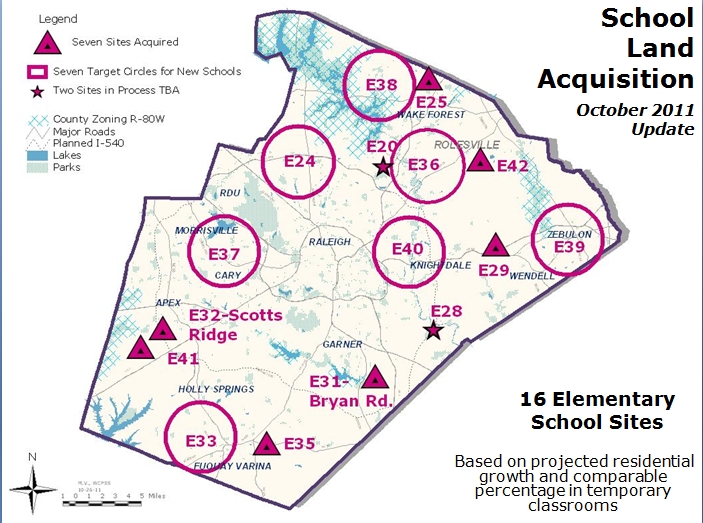A Record analysis of Wake County’s school building program shows a disparity in Raleigh’s growth and the number of new schools built in the capital city.
Raleigh’s school-aged population grew in total numbers by more than three times as much as the next closest municipality, Cary. In relation to growth, however, the number of schools built in Raleigh does not seem to line up.
While Raleigh’s school-age population grew in volume by three times more than Cary’s, only two more schools were built in Raleigh than in Cary.
Concerns about school capacity in Raleigh have been raised by a number of families, who, after participating in the choice process, were not assigned to any of their five regional schools due to a lack of capacity.
“People are moving to the ‘burbs and it’s cheaper to build in the ‘burbs, so of course they’re not going to build in the center,” said Ellen Nightingale, a Raleigh parent whose kindergartner did not receive an assignment in the first choice round. “We need the schools back. We’ve got to get ahead of the curve here. We’ve had a baby boom.”
To examine the claim that there aren’t enough schools being built in Raleigh, the Record compared 2010 Census data against maps that show where new schools have been built and where they are planned for the future.
Federal Census data show that Raleigh gained more than 35,000 school-aged children between 2000 and 2010. Cary experienced the second biggest jump in numbers, adding more than 10,000 children under the age of 18.
Using an average class size of 27 for K-12, that means Raleigh’s school population grew by 1,320 classrooms. For Cary, growth measured in classrooms would be 372.
When comparing the actual addresses of new schools during the past 12 years, Raleigh has gained more schools than any other municipality. The school system built nine schools in Raleigh, while Cary gained seven.
However, looking at a map of the newly constructed schools in Wake County, the disparity becomes clearer. The trend of construction is clearly the heaviest outside of Raleigh or at its very edges.
Of Raleigh’s nine new schools, four are on the city’s border. Two of those new schools with Raleigh addresses serve Wake Forest and Rolesville, which also experienced high growth during the past 10 years.
(Note: The Record did not calculate the number of seats added to any school by renovation or the addition of mobile classrooms.)
Wake schools’ Chief of Operations Don Haydon acknowledges that suburban areas are where school construction has been heaviest.
“We’ve had a lot of growth and a lot of new schools built throughout the Western tier, Cary and then down the Southern tier. [We’ve] had a few out in East and in the North, but I’d say more so West and South,” he said.
Looking at percentage growth of school-aged children, Raleigh ranks fifth of the county’s 12 municipalities. Ahead were Fuquay-Varina, Morrisville, Rolesville and Wake Forest — all places that experienced relatively heavy construction.
Looking at the map for planned school construction, the trends stay the same. The majority of schools are set up to be outside of Raleigh.
These maps show areas identified by WCPSS where new school construction should take place. Click on an image to view full size.



To create the current map of “circle areas,” which identify where WCPSS believes new schools should be placed, Haydon said, his department used data “back probably from the 2008-2009 timeframe.”
However, Haydon said his team will finalize the circle areas by gathering county and municipal growth information as well as what schools have been under and over-chosen in the choice process.
“We’ll overlay those three things together and that’ll tell us where we need to build schools,” Haydon said.
Haydon also noted that WCPSS hopes to set up three niche schools in the city. He said Wake’s two single-sex leadership academies will definitely be located in central Raleigh and he also mentioned the possibility of an elementary-level science academy.
In the meantime, Wake Superintendent Tony Tata, as well as members from the Growth and Planning and Student Assignment teams, will meet with Raleigh families like the Nightingales Monday to address the concerns about lack of capacity.
“I saw recently that Raleigh was ranked the third best city to raise a child,” Nightingale said. “We worked so hard for so long to make Raleigh and downtown an amazing place to live and work and raise a family. This is a critical failure.”
The meeting is scheduled for 6 p.m. Trinity United Methodist Church, 824 N. Bloodworth St. Raleigh.
